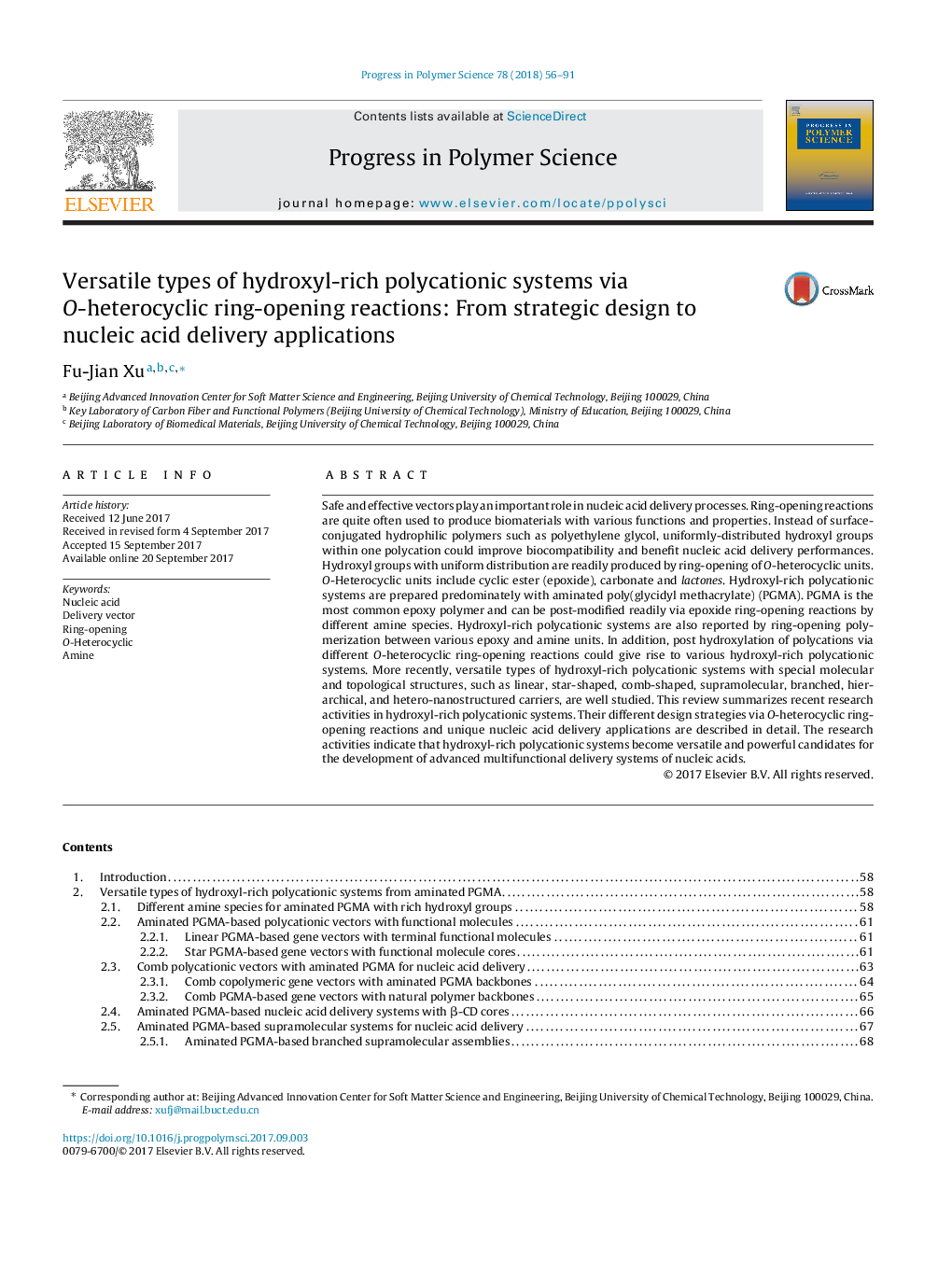| Article ID | Journal | Published Year | Pages | File Type |
|---|---|---|---|---|
| 7825886 | Progress in Polymer Science | 2018 | 36 Pages |
Abstract
Safe and effective vectors play an important role in nucleic acid delivery processes. Ring-opening reactions are quite often used to produce biomaterials with various functions and properties. Instead of surface-conjugated hydrophilic polymers such as polyethylene glycol, uniformly-distributed hydroxyl groups within one polycation could improve biocompatibility and benefit nucleic acid delivery performances. Hydroxyl groups with uniform distribution are readily produced by ring-opening of O-heterocyclic units. O-Heterocyclic units include cyclic ester (epoxide), carbonate and lactones. Hydroxyl-rich polycationic systems are prepared predominately with aminated poly(glycidyl methacrylate) (PGMA). PGMA is the most common epoxy polymer and can be post-modified readily via epoxide ring-opening reactions by different amine species. Hydroxyl-rich polycationic systems are also reported by ring-opening polymerization between various epoxy and amine units. In addition, post hydroxylation of polycations via different O-heterocyclic ring-opening reactions could give rise to various hydroxyl-rich polycationic systems. More recently, versatile types of hydroxyl-rich polycationic systems with special molecular and topological structures, such as linear, star-shaped, comb-shaped, supramolecular, branched, hierarchical, and hetero-nanostructured carriers, are well studied. This review summarizes recent research activities in hydroxyl-rich polycationic systems. Their different design strategies via O-heterocyclic ring-opening reactions and unique nucleic acid delivery applications are described in detail. The research activities indicate that hydroxyl-rich polycationic systems become versatile and powerful candidates for the development of advanced multifunctional delivery systems of nucleic acids.
Related Topics
Physical Sciences and Engineering
Chemistry
Organic Chemistry
Authors
Fu-Jian Xu,
